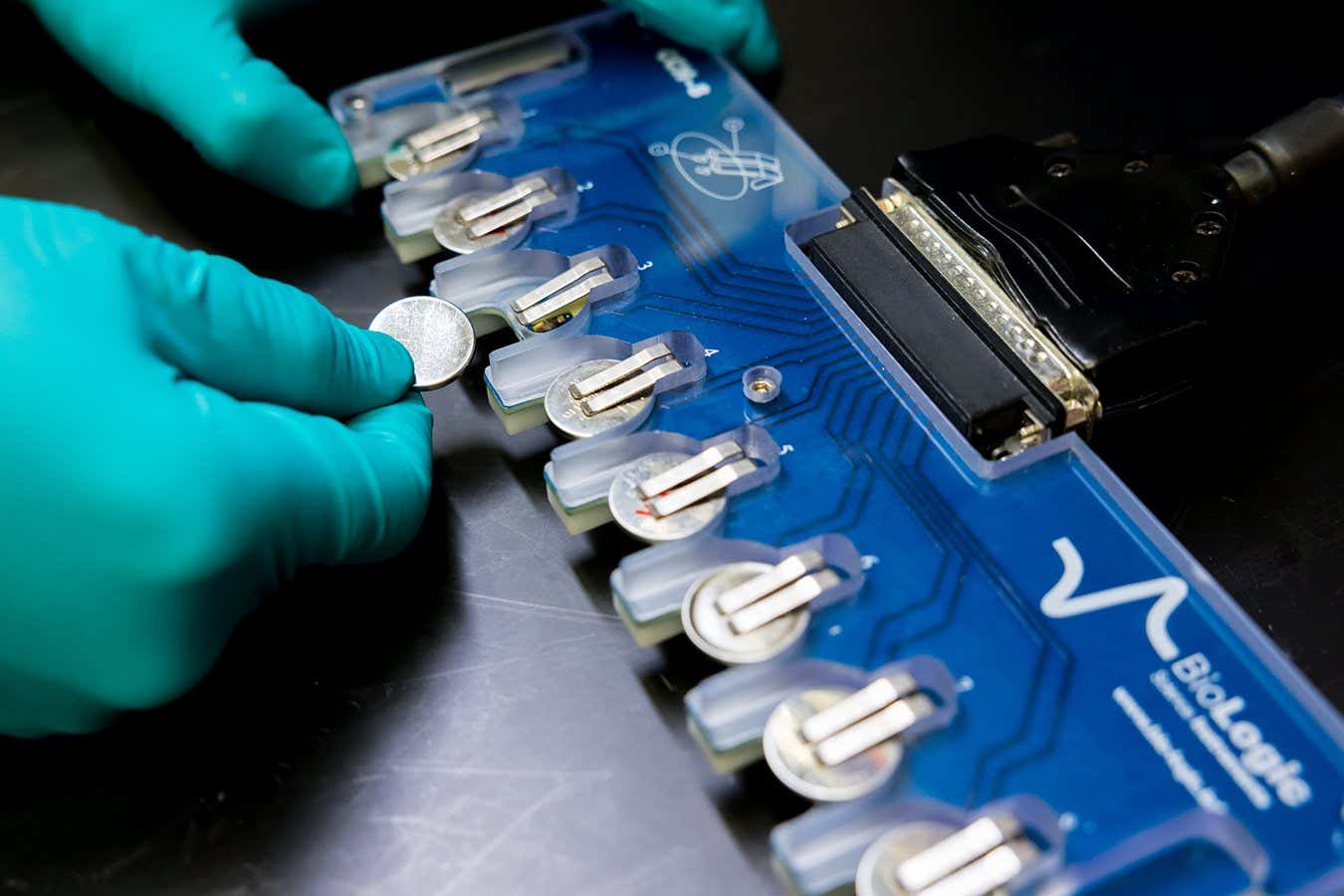Researchers used AI to design a new material that they used to build a working battery – it requires up to 70 percent less lithium than some competing designs.
By Karmela Padavic-Callaghan
9 January 2024
A researcher tests batteries that use a new material designed by AI
Dan DeLong for Microsoft
Artificial intelligence can accelerate the process of finding and testing new materials, and now researchers have used that ability to develop a battery that is less dependent on the costly mineral lithium.
Lithium-ion batteries power many devices that we use every day as well as electric vehicles. They would also be a necessary part of a green electric grid, as batteries are required to store renewable energy from wind turbines and solar panels. But lithium is expensive and mining it damages the environment. Finding a replacement for this crucial metal could be costly and time-consuming, requiring researchers to develop and test millions of candidates over the course of years. Using AI, Nathan Baker at Microsoft and his colleagues accomplished the task in months. They designed and built a battery that uses up to 70 per cent less lithium than some competing designs.
Read more
Toughest known structure discovered by autonomous robot lab
Advertisement
The researchers focused on a type of battery that only contains solid parts, and they looked for new materials for the battery component that electric charges move through, called the electrolyte. They started with 23.6 million candidate materials designed by tweaking the structure of established electrolytes and swapping out some lithium atoms for other elements. An AI algorithm then eliminated the materials that it calculated would be unstable, as well as those in which the chemical reactions that make batteries work would be weak. The researchers also considered how each material would behave while the battery was actively working. After only a few days, their list contained just a few hundred candidates, some of which had never been studied before.
“But we’re not material scientists,” says Baker. “So I called up some experts who’ve worked on large battery projects with the Department of Energy… and said, ‘What do you think? Are we crazy?’”
Vijay Murugesan at the Pacific Northwest National Laboratory in Washington state was one of the scientists who picked up the phone. He and his colleagues suggested additional screening criteria for the AI. After more elimination rounds, Murugesan’s team ultimately picked one of the AI’s suggestions to synthesise in the lab. It stood out because half of what Murugesan would have expected to be lithium atoms were replaced with sodium. He says that this is a very novel recipe for an electrolyte and that having the two elements together opens questions about the basic physics of how the material works inside a battery.
